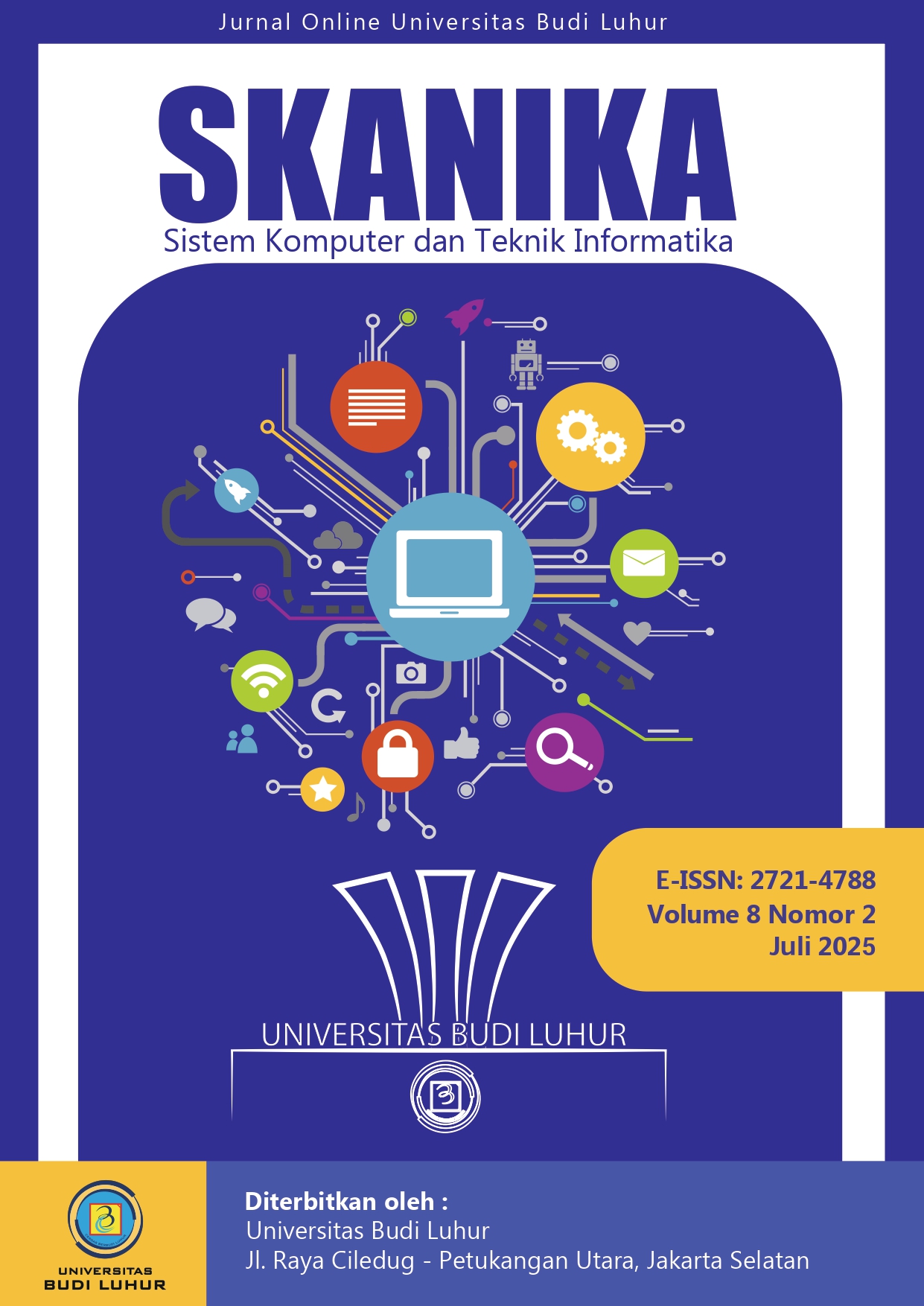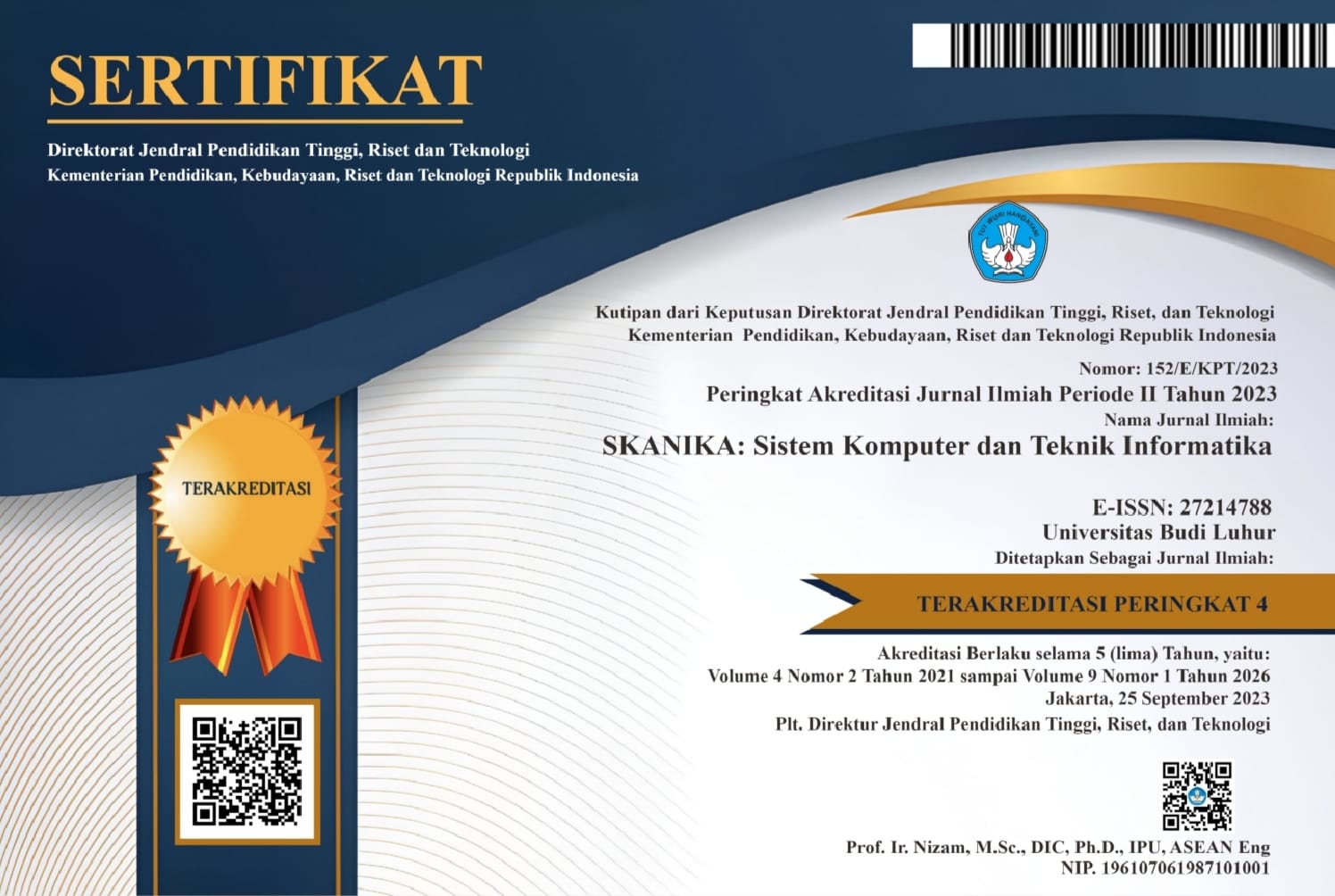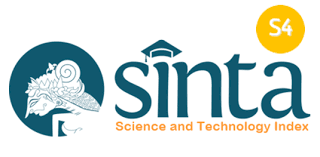ANALISIS SENTIMEN OPINI PUBLIK TERHADAP KASUS KORUPSI BAHAN BAKAR MINYAK OPLOSAN PT PERTAMINA DENGAN HYBRID MODEL DEEP LEARNING
DOI:
https://doi.org/10.36080/skanika.v8i2.3525Keywords:
Sentiment Analysis, Pertamina, Hybrid, Deep Learning, TwitterAbstract
The corruption case related to oplosan fuel oil involving PT Pertamina has become a national issue that has drawn diverse responses from the public. Sentiment analysis of public opinion on social media can provide important insights for the government and stakeholders in understanding public perceptions of the case. This study aims to analyze public opinion sentiment regarding the alleged fuel adulteration corruption case involving PT Pertamina, using a hybrid deep learning model approach. Data were collected from the social media platform Twitter (X) between February 24 and March 19, 2025, resulting in 12,365 tweets after preprocessing. The study implements four model architectures: IndoBERT, CNN, LSTM, and a hybrid IndoBERT-CNN-LSTM model. Evaluation results show that IndoBERT achieved the highest accuracy at 90%, followed by CNN (86%), hybrid (84%), and LSTM with the lowest accuracy (69%). In addition, the K-Fold cross-validation scheme produced more stable model evaluation results than the Hold-Out method. Based on sentiment distribution analysis, public opinion was dominated by negative sentiment at 72%, while positive and neutral sentiments each accounted for 16%. These findings indicate that the public tends to respond negatively to the Pertamina fuel corruption issue. This study contributes to the understanding of public opinion on social media through a deep learning-based sentiment analysis approach and highlights the importance of selecting appropriate model architectures and validation strategies in the task of classifying Indonesian-language text.
Downloads
References
[1] R. D. Pebrianti, “Analisis Sentimen Masyarakat Platform X,” JITET (Jurnal Inform. dan Tek. Elektro Ter., vol. 13, no. 2, 2025.
[2] N. Shahnaz, “Penegakan Hukum Terhadap Penyalahgunaan Pengangkutan Dan Niaga Bahan Bakar Minyak (BBM) Bersubsidi,” vol. 4, no. 1, pp. 223–236, 2025.
[3] C. H. Lin and U. Nuha, “Sentiment analysis of Indonesian datasets based on a hybrid deep-learning strategy,” J. Big Data, vol. 10, no. 1, 2023, doi: 10.1186/s40537-023-00782-9.
[4] D. Y. Yefferson, V. Lawijaya, and A. S. Girsang, “Hybrid model: IndoBERT and long short-term memory for detecting Indonesian hoax news,” IAES Int. J. Artif. Intell., vol. 13, no. 2, pp. 1911–1922, 2024, doi: 10.11591/ijai.v13.i2.pp1913-1924.
[5] K. Chen, Z. Duan, and S. Yang, “Twitter as research data,” Polit. Life Sci., vol. 41, no. 1, pp. 114–130, 2022, doi: 10.1017/pls.2021.19.
[6] S. Kumar, A. K. Kar, and P. V. Ilavarasan, “Applications of text mining in services management: A systematic literature review,” Int. J. Inf. Manag. Data Insights, vol. 1, no. 1, p. 100008, 2021, doi: 10.1016/j.jjimei.2021.100008.
[7] L. L. Wang and K. Lo, “Text mining approaches for dealing with the rapidly expanding literature on COVID-19,” Brief. Bioinform., vol. 22, no. 2, pp. 781–799, 2021, doi: 10.1093/bib/bbaa296.
[8] L. Hickman, S. Thapa, L. Tay, M. Cao, and P. Srinivasan, “Text Preprocessing for Text Mining in Organizational Research: Review and Recommendations,” Organ. Res. Methods, vol. 25, no. 1, pp. 114–146, 2022, doi: 10.1177/1094428120971683.
[9] A. Jakhotiya, H. Jain, B. Jain, and C. Chaniyara, “Text Pre-Processing Techniques in Natural Language Processing: A Review,” Int. Res. J. Eng. Technol., vol. 9, no. 2, pp. 878–880, 2022.
[10] Y. Qi and Z. Shabrina, “Sentiment analysis using Twitter data: a comparative application of lexicon- and machine-learning-based approach,” Soc. Netw. Anal. Min., vol. 13, no. 1, pp. 1–14, 2023, doi: 10.1007/s13278-023-01030-x.
[11] R. Catelli, S. Pelosi, and M. Esposito, “Lexicon-Based vs. Bert-Based Sentiment Analysis: A Comparative Study in Italian,” Electron., vol. 11, no. 3, 2022, doi: 10.3390/electronics11030374.
[12] J. Tao and X. Fang, “Toward multi-label sentiment analysis: a transfer learning based approach,” J. Big Data, vol. 7, no. 1, pp. 1–26, 2020, doi: 10.1186/s40537-019-0278-0.
[13] M. A. A. Halim, M. T. A. Rahman, N. A. Rahim, A. Rahman, A. F. A. Hamid, and N. A. M. Amin, “Analysis on current flow style for vehicle alternator fault prediction,” IOP Conf. Ser. Mater. Sci. Eng., vol. 670, no. 1, 2019, doi: 10.1088/1757-899X/670/1/012042.
[14] M. R. A. Nasution and M. Hayaty, “Perbandingan Akurasi dan Waktu Proses Algoritma K-NN dan SVM dalam Analisis Sentimen Twitter,” J. Inform., vol. 6, no. 2, pp. 226–235, 2019, doi: 10.31311/ji.v6i2.5129.
[15] D. T. Hermanto, A. Setyanto, and E. T. Luthfi, “Algoritma LSTM-CNN untuk Binary Klasifikasi dengan Word2vec pada Media Online,” Creat. Inf. Technol. J., vol. 8, no. 1, p. 64, 2021, doi: 10.24076/citec.2021v8i1.264.
[16] S. F. Handayani, R. W. Pratiwi, D. Dairoh, and D. I. Af’idah, “Analisis Sentimen pada Data Ulasan Twitter dengan Long-Short Term Memory,” JTERA (Jurnal Teknol. Rekayasa), vol. 7, no. 1, p. 39, 2022, doi: 10.31544/jtera.v7.i1.2022.39-46.
[17] R. A. P. Romadhony, “Identifikasi Similar Question dengan IndoBERT ( Studi Kasus,” vol. 2, no. 1, pp. 12–17, 2024.
[18] G. Kaur and A. Sharma, “A deep learning-based model using hybrid feature extraction approach for consumer sentiment analysis,” J. Big Data, vol. 10, no. 1, 2023, doi: 10.1186/s40537-022-00680-6.
[19] M. Heydarian, T. E. Doyle, and R. Samavi, “MLCM: Multi-Label Confusion Matrix,” IEEE Access, vol. 10, pp. 19083–19095, 2022, doi: 10.1109/ACCESS.2022.3151048.
[20] B. W. Rauf, “Sentimen Analisis Pertambangan Di Konawe Utara Dengan Metode Naïve Bayes,” Pros. Semin. Nas. Pemanfaat. Sains dan Teknol. Inf., vol. 1, no. 1, pp. 97–102, 2023, [Online]. Available: https://epublikasi.digitallinnovation.com/index.php/sempatin/article/view/98
Downloads
Published
How to Cite
Issue
Section
License
Copyright (c) 2025 Muhammad Ramdhan Awali, Sawali Wahyu

This work is licensed under a Creative Commons Attribution-ShareAlike 4.0 International License.
CC BY-SA 4.0
Creative Commons Attribution-ShareAlike 4.0 International
This license requires that reusers give credit to the creator. It allows reusers to distribute, remix, adapt, and build upon the material in any medium or format, even for commercial purposes. If others remix, adapt, or build upon the material, they must license the modified material under identical terms.
BY: Credit must be given to you, the creator.
SA: Adaptations must be shared under the same terms.ng












